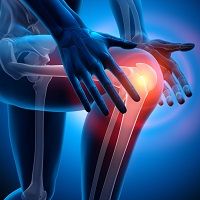Article
Surgeons Are Changing Their Approach to Prosthetic Joint Infection Based on New Evidence
Author(s):
Prosthetic joint infection (PJI) occurs after approximately 2% of primary hip or knee replacements and in up to 6% of revisions surgeries, and cost more than $50,000 per episode. A recent review found that many surgeons have altered their approaches to PJI management based on recent clinical findings.

The Journal of Arthroplasty has published an up-to-date review of prosthetic joint infection (PJI) of the hip and knee. PJI occurs after approximately 2% of primary hip or knee replacements and in up to 6% of revisions surgeries, and cost more than $50,000 per episode. Surgeons and patients fear this specific complication. A research team from the Department of Orthopaedic Surgery, VCU School of Medicine, Richmond, Virginia compiled this review with emphasis on fundamental changes in approach or underlying assumptions.
These researchers note that many surgeons have altered their approaches to PJI management based on recent clinical findings. A key point is the importance of identifying the infecting organism before treating the infection (as opposed to treating empirically), as patients with antibiotic resistant PJI respond poorly if at all to irrigation and debridement (I&D) and one-stage revision. They present an extensive summary of I&D’s more marginal role in PJI, preferred I&D methods, and provide scientific explanation for high failure rates.
Next, they discuss the move toward one-stage revision. Although more study is definitely needed, one-stage revision is appropriate if surgeons select patients carefully and use careful technique. This review also indicates the circumstances under which one-stage revision is not indicated: generalized sepsis, infections in which the bacteria is unidentified, presence of drug-resistant bacteria, sinus tract at site, and severe soft tissue deficiency at the surgical site. These patients will continue to need two-stage revision.
Should treatment failure occur, the investigators urge radical debridement and cautious consideration of chronic prophylactic antibiotics. They discuss what is known about antibiotic-impregnated cement spacers and the goal of concentrating antibiotics locally and avoiding associated systemic toxicity.
When a paradigm shift occurs, it’s critical to know the science behind the changes. This review provides such a review and highlights critical hypotheses.





